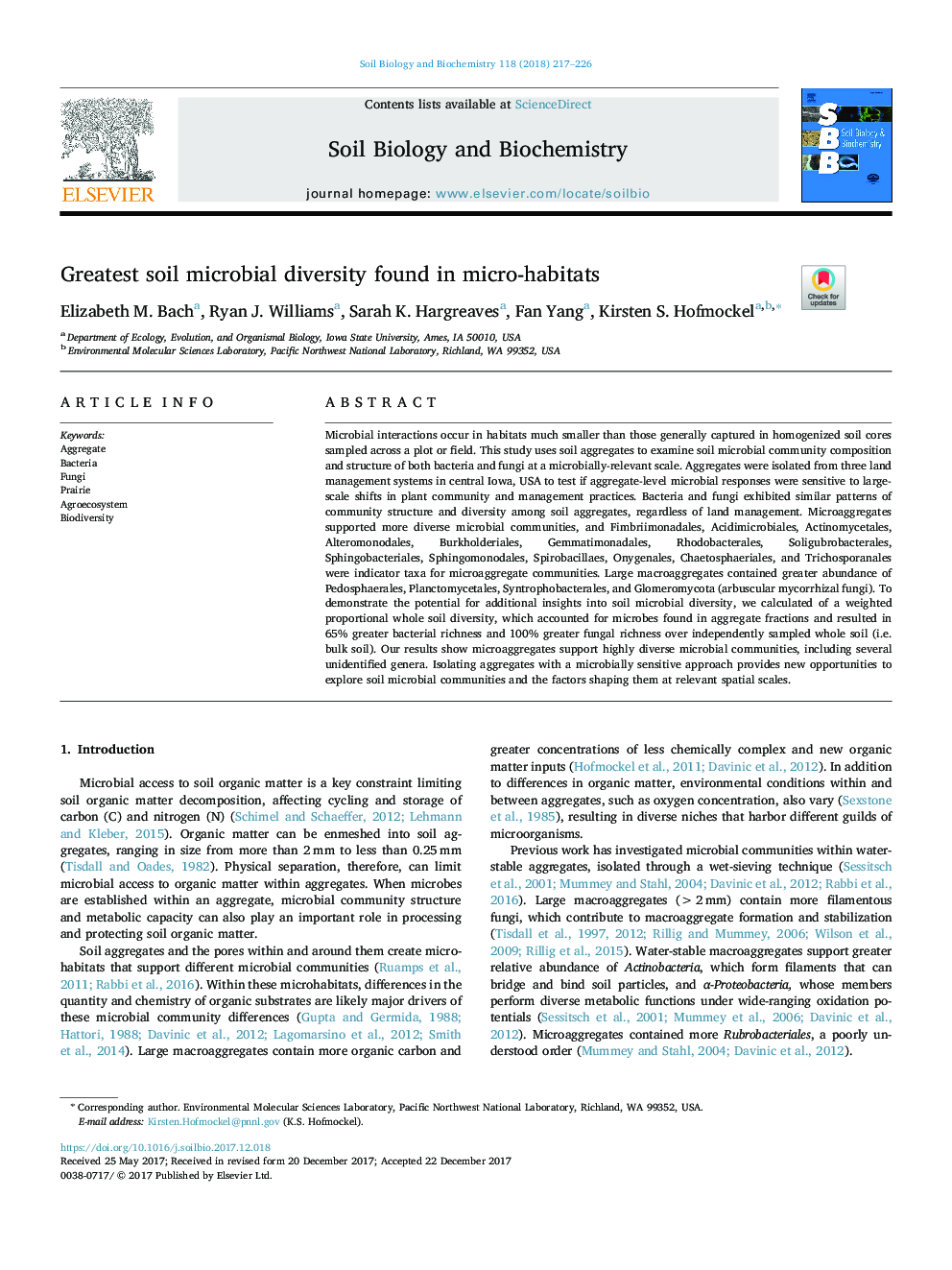| Article ID | Journal | Published Year | Pages | File Type |
|---|---|---|---|---|
| 8363029 | Soil Biology and Biochemistry | 2018 | 10 Pages |
Abstract
Microbial interactions occur in habitats much smaller than those generally captured in homogenized soil cores sampled across a plot or field. This study uses soil aggregates to examine soil microbial community composition and structure of both bacteria and fungi at a microbially-relevant scale. Aggregates were isolated from three land management systems in central Iowa, USA to test if aggregate-level microbial responses were sensitive to large-scale shifts in plant community and management practices. Bacteria and fungi exhibited similar patterns of community structure and diversity among soil aggregates, regardless of land management. Microaggregates supported more diverse microbial communities, and Fimbriimonadales, Acidimicrobiales, Actinomycetales, Alteromonodales, Burkholderiales, Gemmatimonadales, Rhodobacterales, Soligubrobacterales, Sphingobacteriales, Sphingomonodales, Spirobacillaes, Onygenales, Chaetosphaeriales, and Trichosporanales were indicator taxa for microaggregate communities. Large macroaggregates contained greater abundance of Pedosphaerales, Planctomycetales, Syntrophobacterales, and Glomeromycota (arbuscular mycorrhizal fungi). To demonstrate the potential for additional insights into soil microbial diversity, we calculated of a weighted proportional whole soil diversity, which accounted for microbes found in aggregate fractions and resulted in 65% greater bacterial richness and 100% greater fungal richness over independently sampled whole soil (i.e. bulk soil). Our results show microaggregates support highly diverse microbial communities, including several unidentified genera. Isolating aggregates with a microbially sensitive approach provides new opportunities to explore soil microbial communities and the factors shaping them at relevant spatial scales.
Related Topics
Life Sciences
Agricultural and Biological Sciences
Soil Science
Authors
Elizabeth M. Bach, Ryan J. Williams, Sarah K. Hargreaves, Fan Yang, Kirsten S. Hofmockel,
